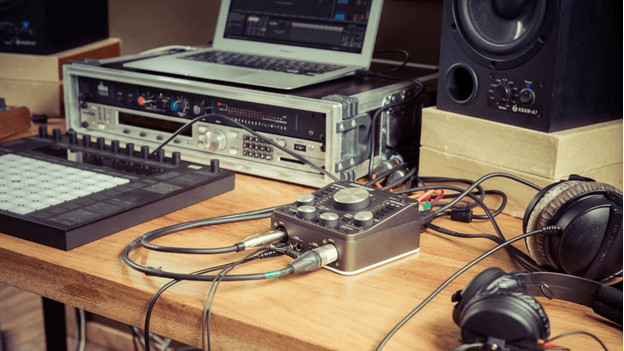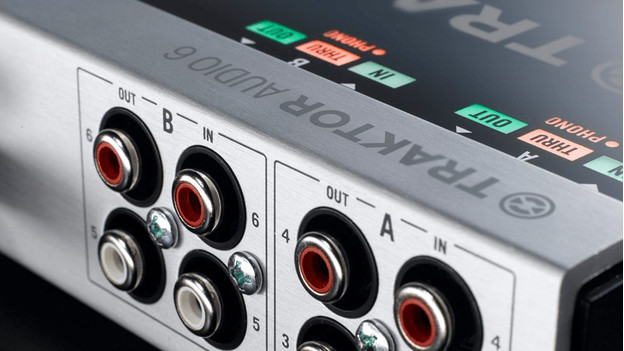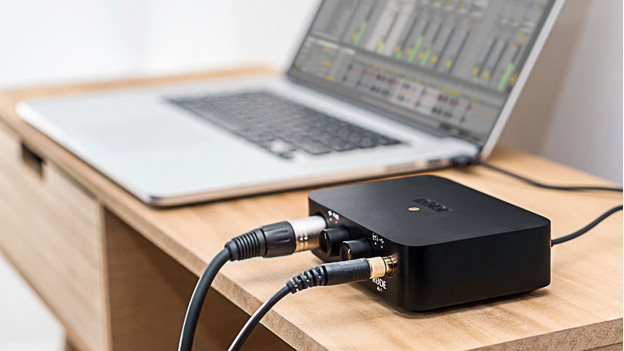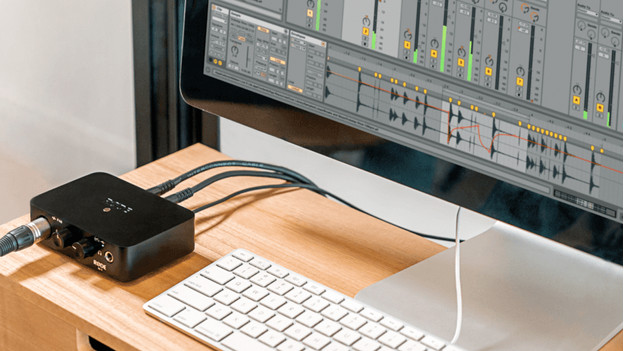
Advice on audio interfaces
Why do you need an audio interface?

You can use an audio interface to connect your studio monitors, instruments, and your computer. The internal sound card of your computer or laptop has a 3.5mm output, which means you can use it for PC speakers. This card lacks the connectors for high quality though. As a result, you can't connect better studio monitors. You'll have to connect these speakers via an XLR or 6.3mm cable. An audio interface is essential for recording the sound of your instruments and microphones. Via a sound card, you'll get the sound of your synthesizer or drum unit in your DAW, the audio software on your computer.
Inputs

When you're looking for a sound card, it's important to check the number and type of connectors. Per microphone or instrument you want to be able to record at the same time, you need an input. For microphones, you need an input with a preamplifier, also called a pre amp. Without an amplifier, the signal is too weak and the input volume will be too low. Do you have a condenser microphone? You need an input with 48V phantom power. For your instruments, you need an instrument or line input. And if you want to be able to connect 3 instruments at the same time, you should look into audio interfaces with 3 inputs. More expensive interfaces often have digital ADAT connectors. This allows you to expand the number of inputs of the interface with 8 or sometimes even 16 channels.
Outputs

You can use the outputs of your interface to connect your studio monitors. You can do this via the XLR or 6.3mm outputs. Sound cards try to transfer the sound as neutral as possible, so you can make the right choice while mixing. A MIDI output allows you to control equipment like your synthesizer via your computer. You can also send the sound to an external audio processor via an output, like a echo, delay, or compressor.
Connect to your computer

You can connect the interfaces to your computer in various ways. The most frequently used connector is a USB connection. The advantage of this connector is the fact that most computers have a USB port. Some interfaces also get their power via this connector, so you don't need an extra power cord. Even though a USB connector works well for most home-studios, it might be the case that you want to transfer too much data. If you connect many instruments and microphones at the same time, it's wise to choose an interface with a Thunderbolt or FireWire connector. These connectors can process large amounts of data. Thanks to this, all your instruments and microphones sound clear. Even if you use all of them at the same time.
The specifications

The way an interface processes signals is also important, in addition to the number of connectors. An interface does this with the help of AD/DA converters. The convertors make sure the sound from your synthesizer ends up in your computer, after which they will send the signal back to your studio speakers. The specifications that you'll find are bit depth and sample rate. The bit depth indicates the number of bits per sample. This mainly effects the noise floor. The higher he bit resolution, the lower the noise in your recordings. Thanks to this, you'll have a larger dynamic range and you can mix more precisely. The sample rate is the number of snapshots that's being used in the sound. The higher the number, the more detailed it'll sound. A sample rate of 48kHz is more than enough to work with. A higher rate, like 192kHz, is more demanding for your computer and you'll barely hear the difference.
Why is there a price difference between the audio interfaces?
The inputs and outputs aren't the only reason for the price differences between audio interfaces. The converters and pre amps used by brands like RME are more expensive than components from a model by Focusrite, for example. This doesn't necessarily mean that the sound cards by RME are better, but they sound more neutral generally spoken. Cards with a higher price often have a lower latency thanks to drivers. This ensures the sound is being processed quickly, so you don't hear a delay. When you play something on your synthesizer, you'll hear the sound come from your studio monitor without a delay.


